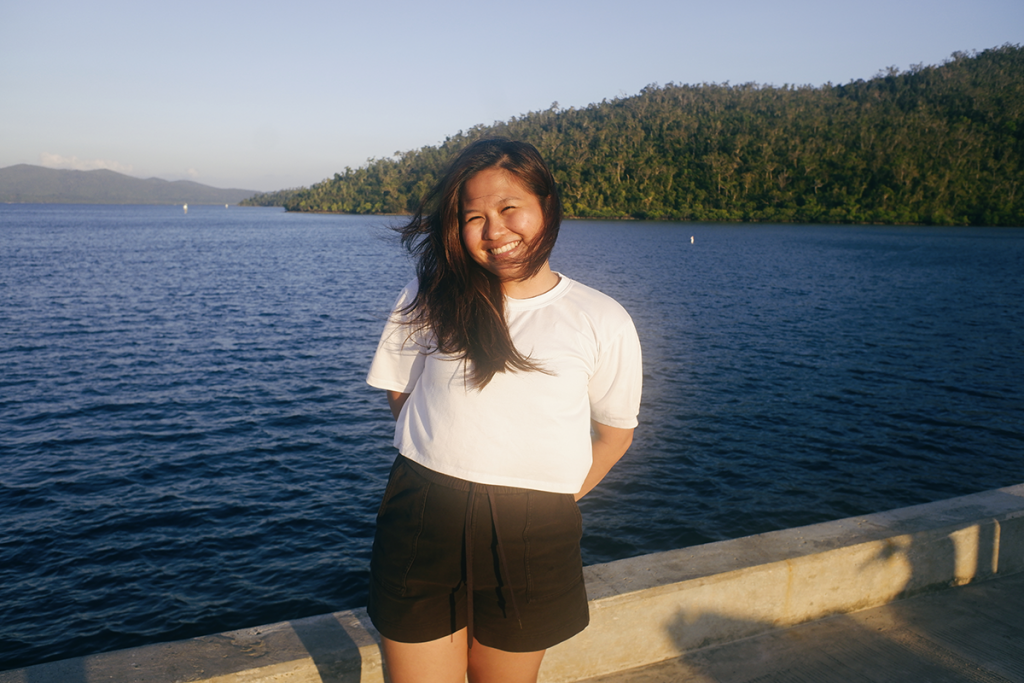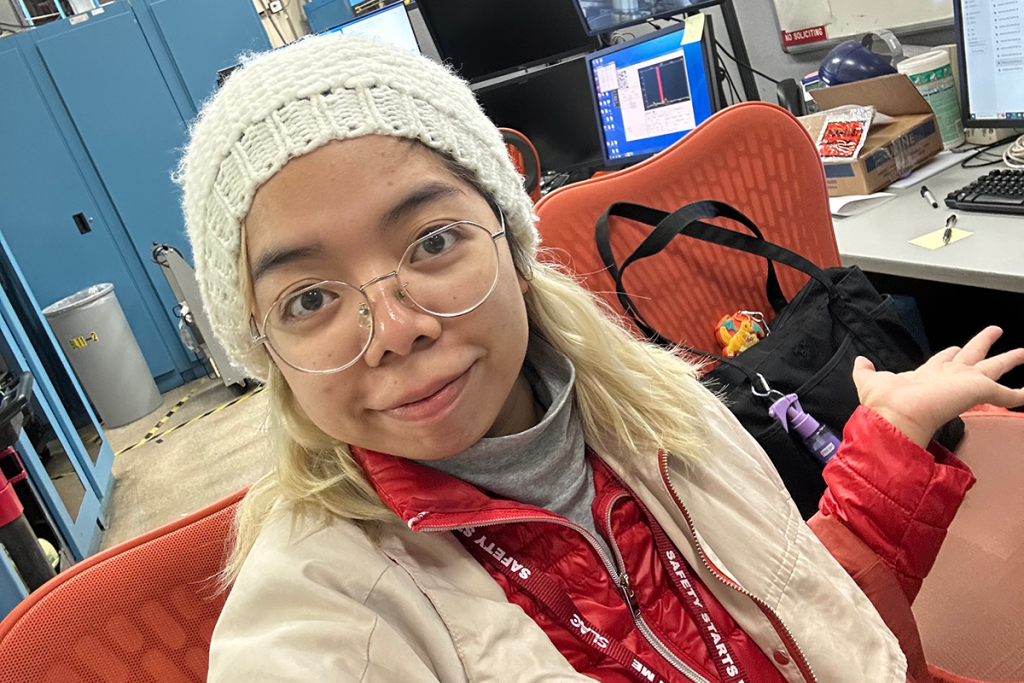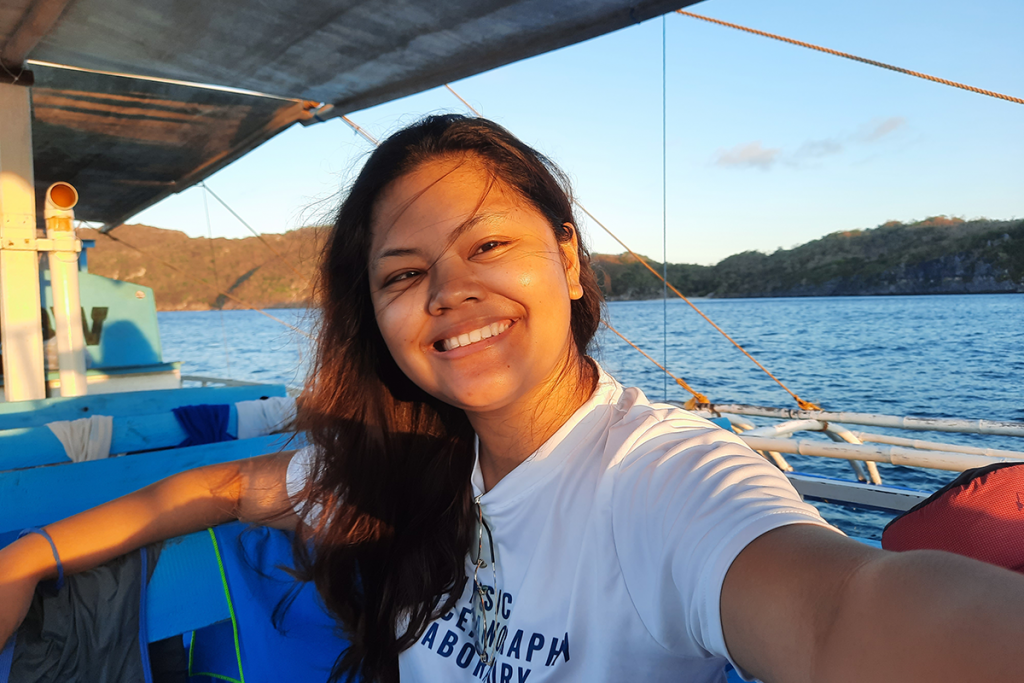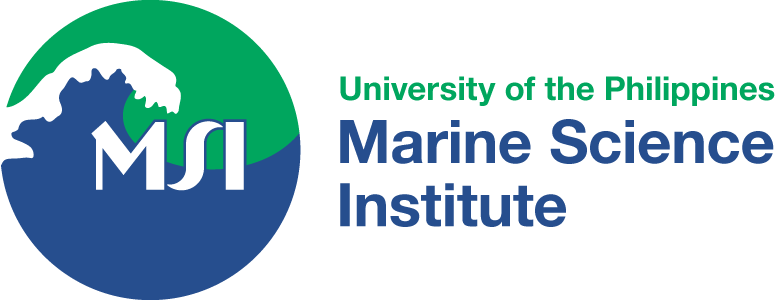Turning the tide through the Marine Physical Sciences track
Written by Dorothy Andrada
The ocean is a force of nature that harbors both powerful currents and calm waves. Understanding its power and how it ebbs and flows is important. Under the Marine Physical Sciences track of UP Marine Science Institute’s (UP MSI) MSc and PhD programs, students are taught how our oceans move: the physical, chemical, and geological processes that have shaped the world for centuries.
This is the second in a three-part series on UP MSI’s academic specializations for graduate students. Read the previous feature: Diving deep into the Marine Biology track

After three years of working at Xavier University’s McKeough Marine Center and the Macajalar Bay Development Alliance, Janell saw UP MSI as the logical next step for her career. She also saw it as an opportunity to explore conducting research in a new field. Her love for coral reefs pushed her to take BS Marine Biology at Xavier University, but her curiosity led her to questions that biology alone couldn’t answer.
What makes certain coral growth forms abundant in one place, but not others? How does a reef’s characteristics and location influence what types of fish you can find there? The answers, Janell realized, were leading her to oceanography.
Learning a new field was exciting, but learning through online classes was tough. “We were the first batch of pandemic students,” Janell said. “It gets lonely. What helped me manage was having my support system with me.”
Staying connected with her classmates through Discord calls eased some of the stress. Despite the distance, her labmates made sure she felt right at home. Dr. Charina Lyn Repollo, who Janell fondly recalls as her first coding teacher, patiently taught her the intricacies of programming with MATLAB. Above all, Dr. Cesar Villanoy guided Janell to projects and conferences where she could fully come into her own as a marine scientist.
Janell treasures much of the support from her mentor. The advice she finds most meaningful is from one of Dr. Villanoy’s first emails: Enjoy the process of doing science. Find the fun.
Fun, as she discovered in her Remote Sensing class with Dr. Laura David, turned out to be coding and satellite data. For her thesis, Janell explored how oceanographic phenomena such as upwelling, eddies, and island wakes could be related to the biological productivity in the Bohol Sea. Since she used satellite data, Janell was able to conduct much of her thesis from her home in Cagayan de Oro.
Now in the final stages of her Master’s program, Janell looks back on her journey with a sense of pride. “Hindi din easy ang pinagdaanan ko as a remote student, but luckily I was able to overcome,” she smiled.

Shyrill Mariano entered UP MSI not as an ocean person, but as a mountain lover.
Her interest in marine sciences formed incidentally. In her final year as a BS Geology student at UP Diliman, she took Marine Science 101 as a general education class. At the same time, she also took a chance on a new elective being offered: Organic Geochemistry, taught by Dr. Caroline Jaraula. When Dr. Jaraula mentioned how she was building a new laboratory at UP MSI, Shyrill knew what she wanted to do — or, at least, who she wanted to work under.
“Nung nag-apply ako, wala pa talaga along target topic. Pero alam ko lang I wanted to be in MSI,” Shyrill said. “Half the reason was that I wanted to be in [Dr. Jaraula’s] lab.”
The Organic and Stable Isotope Geochemistry Laboratory specializes in characterizing organic pollutants. For Shyrill, who describes herself as a “general earth science enjoyer” more than anything else, the kind of environmental chemistry that Dr. Jaraula was working on was fascinating. It was a science that focused on how land activities affected the ocean environment.
Shyrill tailored her classes to match her growing interest in contaminants. One of her most memorable experiences was a field trip with her Marine Pollution Chemistry class. After seeing the Philippine Coast Guard’s Marine Environmental Protection Command Arm, Shyrill even considered joining.
Ultimately, her heart stayed in academia. What Shyrill appreciated most about balancing her studies with her job as a university research assistant was that she had plenty of opportunities to develop her field and lab skills. “May idea sa ibang labs na iba yung nag-cocollect ng data tapos may designated people for processing it. Sa physical sciences, you get the brunt of both sides.”
The intensiveness of her education is echoed in the breadth of her work. Shyrill examined pharmaceutical contaminants sampled from all over the Philippines for her thesis. Her research is available online in Frontiers in Earth Science.
Shyrill is now an ocean away, taking her PhD in Environmental and Sustainable Engineering at the University at Albany. Ironically enough, her current research group studies wildfire chemistry.
“It’s the same techniques and the same equipment,” Shyrill said. “Whatever I learned in MSI is still very useful.”

Aiko del Rosario entered UP MSI feeling like all her excitement for science was lost.
The monotonous work of a patent analyst was steadily draining her. A trip back home to the serene beaches of Masbate gave her a needed change of pace. It also gave her an idea: What if she studied marine science? It was a curious thought, but Aiko was a BS Physics graduate from UP Diliman. She was trained in plasma and semiconductors, not fish and coral.
What finally convinced her was when her colleagues mentioned Dr. Cesar Villanoy. They’ve collaborated with him before, they said, and he did a lot of physics work. Aiko took the leap.
“First time kong na-realize na pwedeng i-apply ang physics sa dagat!” Aiko laughed. Physical Oceanography, one of the Marine Physical Sciences track’s majors, was an eye-opener. Motion, force, and pressure were both familiar and foundational. As she studied ocean currents more, her passion for science started to return.
Research in the Physical Oceanography Laboratory needs a mishmash of talents: calibrating instruments, coding software, soldering equipment, preparing boats, designing maps, creating models, and communicating with locals. It’s to the point that scientists from abroad are often shocked by how much they can do, Aiko shared. It may have been surprising for the French, Mexican, and Italian scientists she worked with, but for her, it was the norm.
Troubleshooting was a skill that Dr. Villanoy always emphasized, and it was a skill that Aiko liked practicing. “Laging may different problem,” she said. “You’re allowed to do anything within your means to solve it.”
With the support of the Graduate Research and Education Assistantship for Technology (GREAT) Program, she conducted her thesis on mesoscale eddies and how they differ throughout the Philippines. After completing her Master’s, she received funding for a project on Visayan Sea Modeling for Operational Oceanography from the Department of Science and Technology – Philippine Council for Agriculture, Aquatic and Natural Resources Research and Development (DOST-PCAARRD).
Despite currently leading a project for DOST-PCAARRD and receiving teaching offers from state universities, Aiko isn’t completely sure what her next step will be just yet. However, she does have a larger goal in mind.
“Shine-share ko ang dream ni Boss K,” Aiko said, using her lab’s affectionate nickname for Dr. Villanoy. “The dream is to have operational oceanography in the Philippines. I want to be part of that.”
Interested in becoming a mandaragat? Halina’t maglayag! Applications for our MSc and PhD programs for the 1st Semester, AY 2024-2025 are currently open. See more information in MSI Academics.
